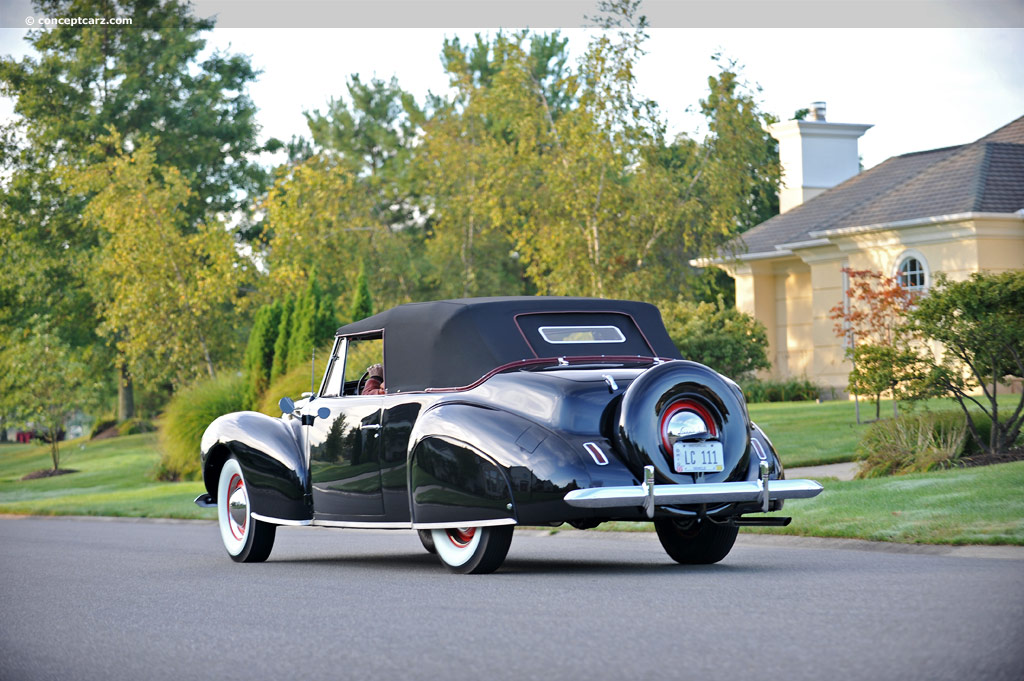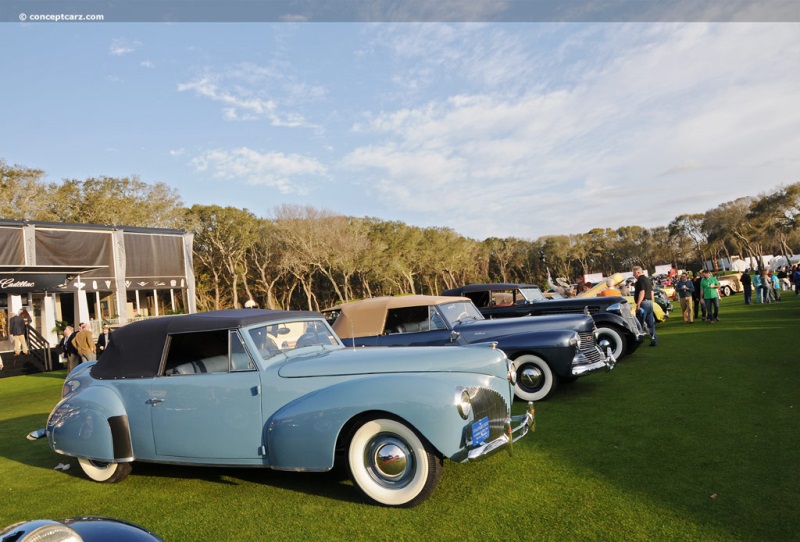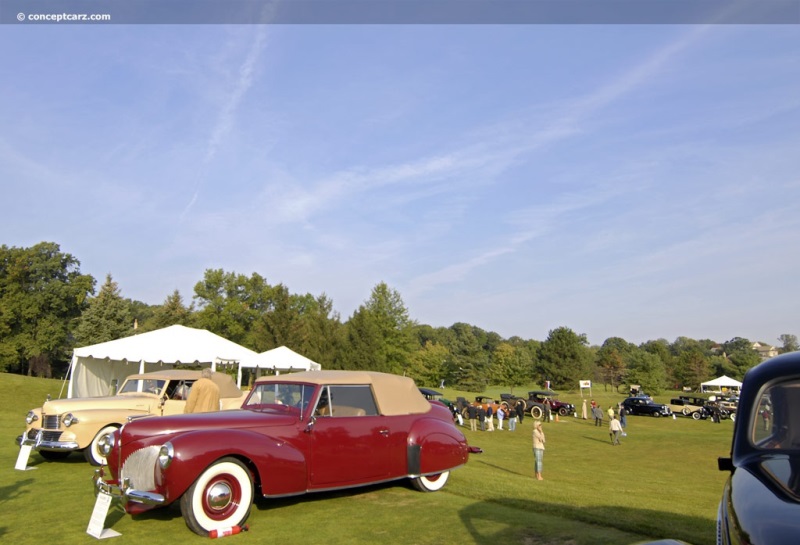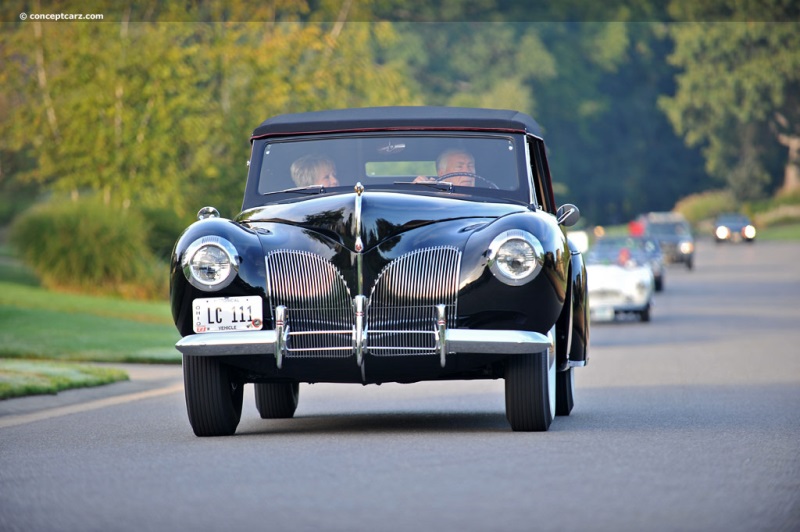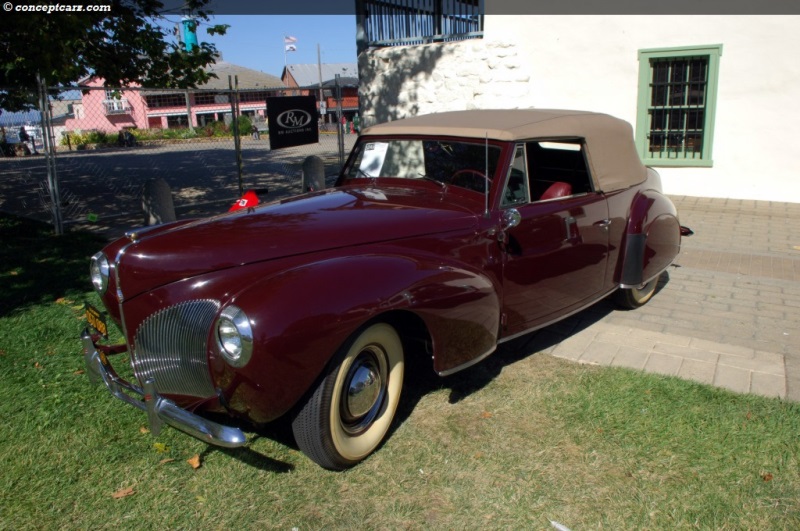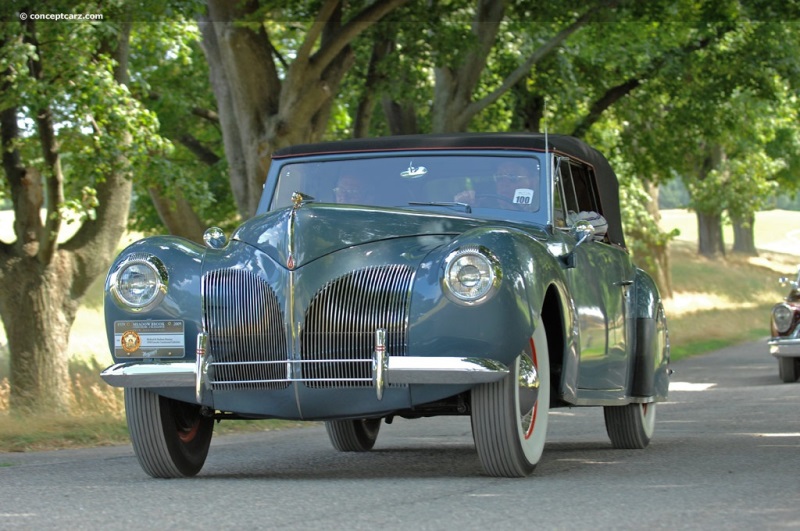1940 Lincoln Continental Navigation
On July 29th of 1909, Henry Martyn Leland sold Cadillac to General Motors for $4.5 million. He remained with the company as an executive until 1917 following a dispute with company founder William C. Durant over producing material during World War I. Durant was a pacifist and declined the offer to build Liberty aircraft engines in support of the war effort. As a patriot and a businessman, Leland (and his son Wilfred) lept at the opportunity by using his Cadillac profits to start a new company called Lincoln. After just ten months of starting the business, the Lincoln Motor Company was building fifty Liberty engines a day. 
Cabriolet
Chassis #: H95945
View info and history
Auction entries : 1In 1921, the first Lincoln automobile was introduced, powered by a 60-degree V8 engine. These were well-engineered and built automobiles that were reliable, strong, and powerful. Unfortunately, the engineering prowess far exceeded its styling, and the bodies were deemed stodgy and out of date. To resolve this issue, Lincoln turned to the Buffalo, New York firm of Brunn & Company. Hermann A. Brunn responded by creating a set of twelve body designs, but by the time they reached Mr. Leland's desk, it was too late as dismal sales, the post World War I recession, and a monumental $4 million tax bill signaled the end of Lincoln. In 1922, the company was purchased out of receivership by Henry Ford, and Edsel Ford was placed in control.The Lelands remained with the company, but only briefly, leaving four months due to disagreements. Edsel wasted no time in commissioned America's best coachbuilding firms to create designs for the Lincolns, including Judkins, Dietrich, LeBaron, Derham, Locke, and Brunn. The result was a dramatic increase in sales, and in 1932, the new twelve-cylinder Model KB was introduced, with a displaced of 447.9 cubic-inches and 150 horsepower. A year later, the Lincoln V8 was replaced by a smaller 328 cubic-inch V12 with 125 horsepower and installed in a 136-inch wheelbase, complimenting its larger and more potent sibling that used a 145-inch platform. Due to the Great Depression, Lincoln sales for 1933 were dismal, with 587 of the longer Model KB and 1,420 Model KA. The luxury segment was devastated across the board, as manufacturers aggressively fought to attract the dwindling pool of capable buyers into their showroom. Engines grew in power and coachwork was among the finest ever created. For Lincoln, building two different engines in the shrinking economy did not make business sense, so in 1934, both engines were dropped and replaced by a 414 cubic-inch, 150 horsepower V12 unit that would power both the KA and the KB. Lincoln would continue to use twelve-cylinder engines into the post-war era, complimenting the Ford company's use of a V8. 1,647 Lincolns were built in 1933, 2,411 in 1934, and 1,411 in 1935. 
Cabriolet
Chassis #: H100569
View info and historyIn 1936, Lincoln introduced a revolutionary car called the Zephyr, joining the Model K in the lineup. While just over 1,500 examples of the Model K were built in 1936, Lincoln built nearly 15,000 examples of the Zephyr. The Model K had a 150 horsepower V12 engine while the Zephyr was powered by a 110 hp V12. Along with attractive and modern body styles, the Zephyr was priced in the low $1,000s, while the Model K's pricing began at $4,200. The aerodynamic styling of the Lincoln Zephyr had been a risky venture for the company, as Chrysler's attempt with its Airflow range in 1934 had demonstrated the public's reluctance to change. Lincoln's attempt, however, proved that streaming was the new trend as the public agreed with the sweeping lines and teardrop designs. It was the company's first all-steel unibody construction (monocoque) and the art deco styling was originally created by John Tjaarda of the Briggs Manufacturing Company, with fine-tuning by Edsel Ford and in-house designer Eugene 'Bob' Gregorie. The horizontal grille used on the 1937 models was the first to incorporate this design which has remained a feature currently used on Lincolns in modern times. The body was the first unibody to be designed as a stressed structure and it was both lighter and much stronger than conventional body-on-frame construction. The engine was based on Ford's flathead V8 and was backed by a three-speed transmission and had mechanical brakes on all wheels. The Lincoln Continental
1939 was the final year for the Lincoln Model K, and fewer than 150 examples had been produced. Nearly all of the 1939 Lincoln production was Zephyr models, and for 1940, Lincoln would add the Continental to the lineup, which was essentially a Zephyr but was three inches lower and had a seven-inch longer hood. It used the instrumental panel from the Lincoln-Zephyr Town Limousine and featured a gold-colored finish for the hardware and interior trim. The engines had chromed acorn cylinder head nuts, and aluminum heads and manifolds. While the Zephyr was offered as a 2- and 4-passenger coupe, sedan, town sedan, convertible coupe, limousine, and club coupe, the Continental was offered as either a Cabriolet or a coupe. 350 examples of the Continental Cabriolet were sold at a base price of $2,840 (far above the $1,770 of the Zephyr convertible coupe). 54 examples were Continental Cabriolets.
Cabriolet
Chassis #: H103724
View info and history
Auction entries : 1Both the Zephyr and the Continental were powered by an L-head, 292 cubic-inch twelve-cylinder engine with hydraulic valve lifters, a Holley downdraft two-barrel carburetor, four main bearings, and delivered 120 horsepower at 3,500 RPM and 220 lbs-ft at 2,000 RPM. They used a three-speed sliding gear transmission with column shift controls and a single dry plate clutch. They had a Columbia two-speed rear axle, pressed steel, dropped center wheels, and Bendix hydraulic internal expanding brakes on all four wheels. The Continental nameplate would be used by Lincoln, throughout its history, for over five decades. This first generation of the Continental would re-appear after World War II and would become the final American vehicle line with a factory-produced V-12 engine, ending in 1948. Lincoln introduced its first all-new postwar designs in 1949, sharing similar design cues with its Mercury sibling, and powered by a 336.7 cubic-inch V8 engine.
by Daniel Vaughan | Oct 2020
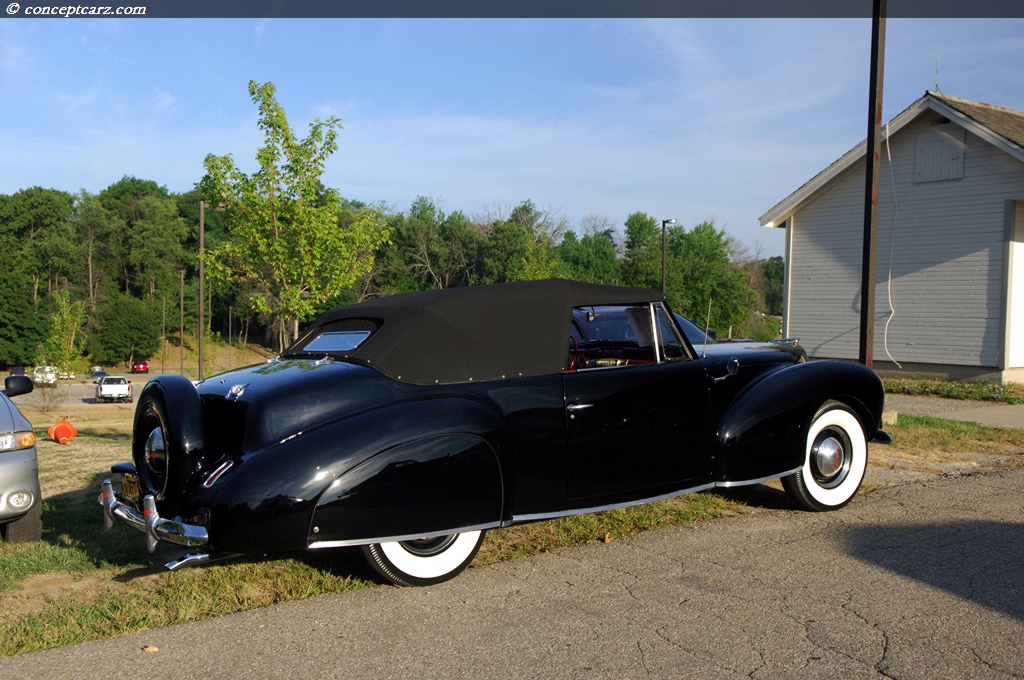
Cabriolet
Chassis #: H95945
View info and history
Auction entries : 1
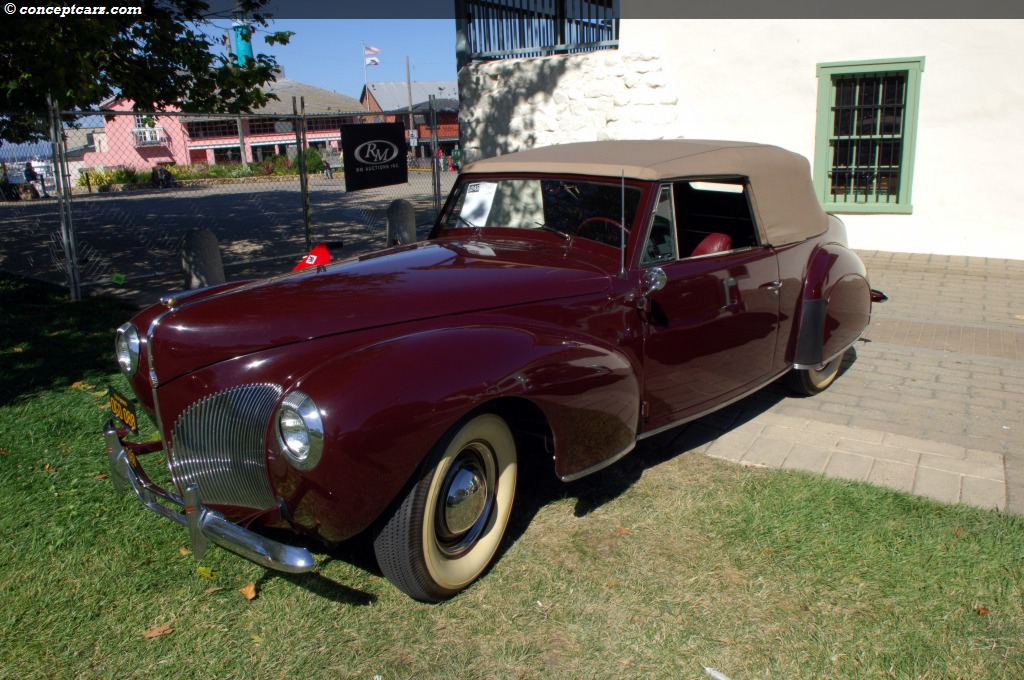
Cabriolet
Chassis #: H100569
View info and history
1939 was the final year for the Lincoln Model K, and fewer than 150 examples had been produced. Nearly all of the 1939 Lincoln production was Zephyr models, and for 1940, Lincoln would add the Continental to the lineup, which was essentially a Zephyr but was three inches lower and had a seven-inch longer hood. It used the instrumental panel from the Lincoln-Zephyr Town Limousine and featured a gold-colored finish for the hardware and interior trim. The engines had chromed acorn cylinder head nuts, and aluminum heads and manifolds. While the Zephyr was offered as a 2- and 4-passenger coupe, sedan, town sedan, convertible coupe, limousine, and club coupe, the Continental was offered as either a Cabriolet or a coupe. 350 examples of the Continental Cabriolet were sold at a base price of $2,840 (far above the $1,770 of the Zephyr convertible coupe). 54 examples were Continental Cabriolets.
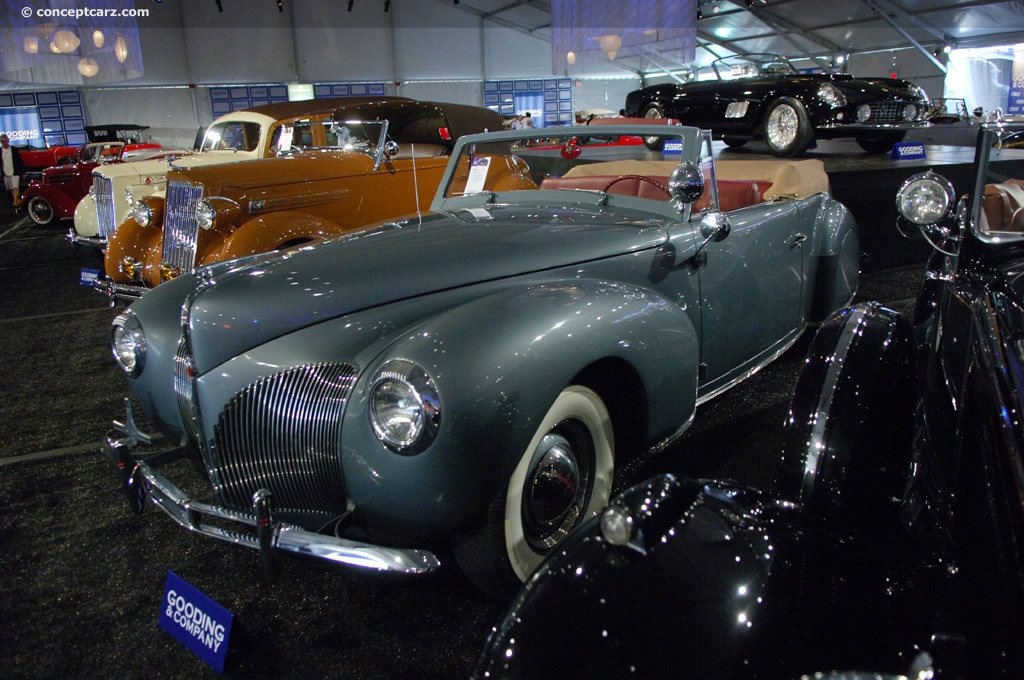
Cabriolet
Chassis #: H103724
View info and history
Auction entries : 1
by Daniel Vaughan | Oct 2020
- 1940 Lincoln Continental Menu
- Article
- Image gallery
- Valuation
- Specifications
- Profiles
- Production figures
- Accessories
1940 Lincoln Continental Vehicle Profiles
Recent Vehicle Additions
Performance and Specification Comparison
Price Comparison
$1,360 - $1,770
Continental First Generation Specification Comparison by Year
Year
Production
Wheelbase
Engine
Prices
Related Automotive News

Lincoln Celebrates A Century Of Elegance And Innovation, Looks Ahead To A Connected, Electrified Future
Marking a century of Lincoln, the brand celebrates its storied past as it prepares for an exciting, electric future
Over the last 100 years, Lincoln has pioneered such innovations as center-opening coach doors, electric gauges, keyless entry and sy...

CHEVROLET TRUCKS GET THE PERSONAL TOUCH
Expanded range of accessories showcased on Silverado, Colorado concepts
PAHRUMP, Nev. – Vehicle ownership experiences dont get much more personal than with trucks. From work to recreation, they provide the heavy lifting for lifes acti...

DODGE VIPER POWERS INTO 2016 WITH NEW ACR MODEL, EXPANDED CUSTOM OPTIONS AND INDUSTRY-EXCLUSIVE COLORS
New 2016 Dodge Viper ACR (American Club Racer) model returns fastest street legal Viper track car ever
New matte-finish exterior color options double the Vipers custom 1 of 1 exterior paint options to 16,000 colors and more than 50 million uniq...

Edsel Ford's Speedster Stars at 'The Amelia'
Edsel Fords continental car, a custom boattail speedster, will take its rightful place in the Sports Car Class of the 18th annual Amelia Island Concours dElegance. In the shape of Edsels seminal speedster is the genesis of Fords legendary design...

Lincoln at Los Angeles Auto Show Press Days: Celebration of Its Past and Future As Brand Rolls Out Its Reinvention
The brand pays tribute to its heritage today, displaying seven of the most influential Lincoln designs
Thursday sees a display full of the all-new MKZ premium midsize sedan and MKZ Hybrid, the future of Lincoln, on the Lincoln stand
Lincoln launches...
